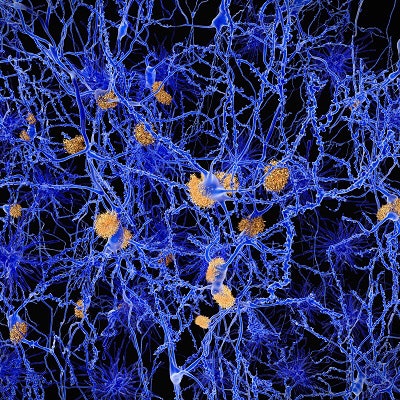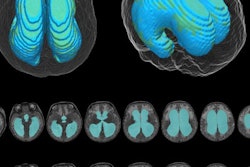
A deep-learning algorithm can differentiate between Alzheimer's disease and idiopathic normal pressure hydrocephalus (iNPH) on MRI scans at a comparable accuracy to radiologists, according to research published online January 22 in Magnetic Resonance in Medical Sciences.
Using a technique that can facilitate development of deep-learning algorithms with a small training dataset, a team of researchers led by Dr. Ryusuke Irie of the Juntendo University School of Medicine in Tokyo created a model that was 90% accurate for classifying healthy controls and patients with iNPH or Alzheimer's disease.
"This method may help differential diagnosis even when a small number of cases are [used for training]," the authors wrote.
As Alzheimer's disease and iNPH have different treatment approaches, it's important to differentiate between the two conditions early on. The researchers sought to develop an automated method that can help with this sometimes-challenging diagnostic task on MRI.
They retrospectively gathered 69 age-matched cases for the study, including 23 healthy controls, 23 patients with iNPH, and 23 patients with Alzheimer's disease. As they didn't have many cases, the authors elected to train their deep convolutional neural network using the residual -- the difference between an original image and a compressed and reconstructed image.
"In the residual extraction approach, first we extract the residual, and then input that to a convolutional neural network," they wrote. "Extracted residual image is the essence of anomaly, so we expected that it would enhance model training and increase the diagnostic accuracy between iNPH and [Alzheimer's disease]."
After training the algorithm, the researchers also enlisted two radiologists with nine and five years of experience, respectively, to interpret the whole-brain T1-weighted images.
| Deep-learning performance for identifying iNPH, Alzheimer's disease, and healthy controls | |||
| Radiologist 1 | Radiologist 2 | Deep-learning model | |
| Sensitivity for iNPH | 96% | 96% | 91% |
| Specificity for iNPH | 96% | 98% | 91% |
| Sensitivity for Alzheimer's disease | 61% | 74% | 83% |
| Specificity for Alzheimer's disease | 89% | 87% | 98% |
| Overall accuracy for iNPH, Alzheimer's disease, and healthy controls | 79% | 83% | 90% |
The deep-learning algorithm accurately identified 22 (96%) of the 23 healthy controls. All of the differences between radiologists and the deep-learning model failed to reach statistical significance.
"Although there was no statistically significant difference between the results of our model and the interpretation of the radiologists, the diagnostic accuracy of our model was higher than those of the radiologists who conducted the reading study: The radiologists tended to be more accurate for iNPH diagnosis, whereas the deep learning-based model tended to be more accurate for [Alzheimer's disease]," the authors wrote. "Deep learning may be more accurate than radiologists for diagnosis of [Alzheimer's disease] by capturing information that is invisible to human eyes."
As the study had a small sample size, the results should now be validated using a different cohort of patients, according to the researchers.
Also, "Amyloid-positron emission tomography can reliably exclude the diagnosis of [Alzheimer's disease] and will be helpful to create a highly reliable dataset for deep learning in the future study," the authors noted.




.fFmgij6Hin.png?auto=compress%2Cformat&fit=crop&h=100&q=70&w=100)




.fFmgij6Hin.png?auto=compress%2Cformat&fit=crop&h=167&q=70&w=250)











